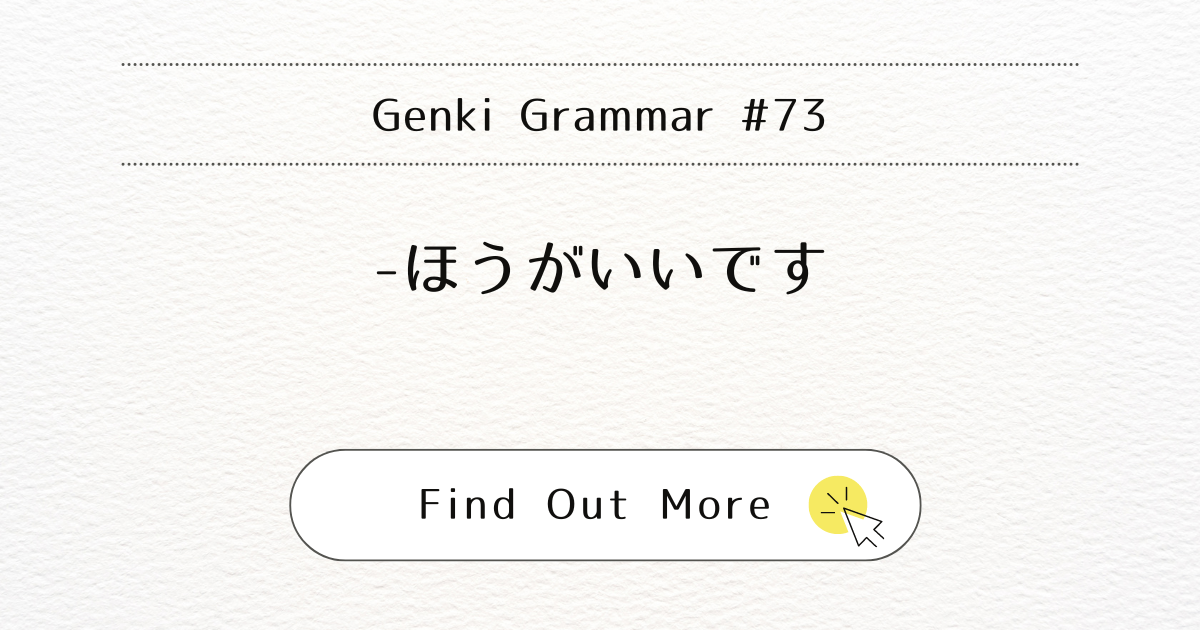
Introduction
In this blog post, we will learn about the Japanese grammar pattern: -ほうがいいです (hou ga iidesu). This pattern is used to give advice or recommendations. Let’s explore how to use it!
What It Means
The -ほうがいいです (hou ga iidesu) pattern means “it is better (for you) to do…” or “it is better not to…”. It is used to give advice or suggest the best course of action.
When You Use It
Use -ほうがいいです (hou ga iidesu) when you want to:
- Give advice.
- Recommend an action.
- Suggest avoiding something.
Examples
Here are some examples to help you understand how to use -ほうがいいです (hou ga iidesu):
Affirmative:
もっと野菜を食べたほうがいいですよ。
(Motto yasai o tabeta hou ga ii desu yo.)
You’d better eat more vegetables.
早く寝たほうがいいですよ。
(Hayaku neta hou ga ii desu yo.)
You’d better go to bed early.
Negative:
授業を休まないほうがいいですよ。
(Jugyō o yasumanai hou ga ii desu yo.)
It is better not to skip classes.
甘いものを食べないほうがいいですよ。
(Amai mono o tabenai hou ga ii desu yo.)
It is better not to eat sweets.
Note
- Use the short, past, affirmative form of a verb with ほうがいいです (hou ga iidesu) if the verb is affirmative.
- Example: 食べたほうがいいです (Tabeta hou ga iidesu) means “It is better to eat.”
- Use the short, present, negative form of a verb with ほうがいいです (hou ga iidesu) if the verb is negative.
- Example: 食べないほうがいいです (Tabenai hou ga iidesu) means “It is better not to eat.”
Conclusion
The -ほうがいいです (hou ga iidesu) pattern is a useful way to give advice and make recommendations in Japanese. It helps you suggest the best action or warn against something.



